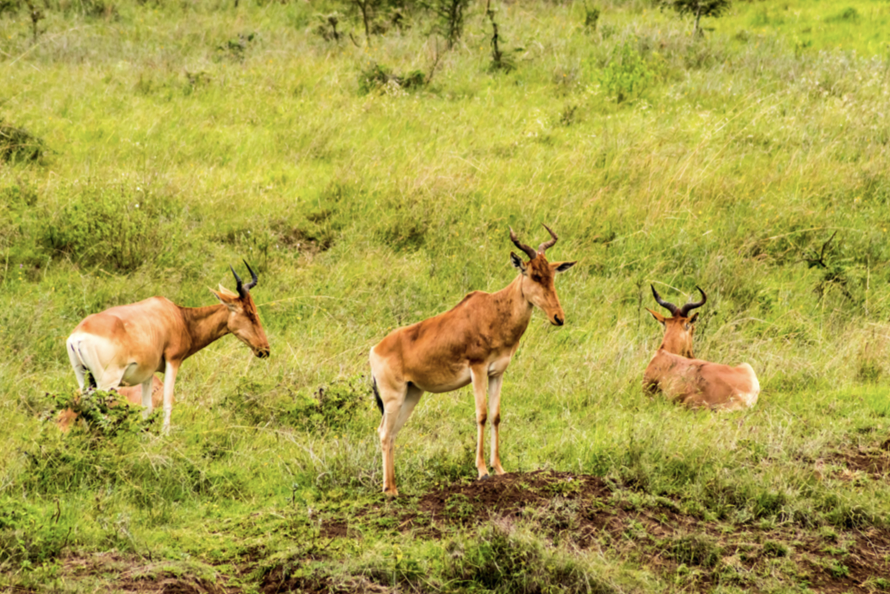HIROLA
Species in Peril:
HIROLA
The hirola: a unique & endangered antelope
Interesting behaviors
Hirola are crepuscular animals, feeding primarily around sunrise and then again just after nightfall. They are social and spend the most of their time in small groups of 15-40 people, which are made up of females and their progeny, as well as a dominant male. Depending on the season, these tiny groupings can grow into herds of several hundred people.
Adult males are territorial, with excrement, secretions from the sub-orbital glands, and stomping areas where males scrape the dirt with their hooves and slash the foliage with their horns marking their territory. Hirolas are commonly seen alongside oryx, Grant’s gazelles, Burchell’s zebras, and topi, but they avoid Coke’s hartebeests, buffalo, and elephants.
Special characteristics
The hirola is a medium-sized antelope with a tan to rufous-tawny coat, slightly lighter underbelly, white inner ears, and a white tail that runs down to the hocks. It possesses lyrate horns that are ridged along three quarters of its length and lack a basal pedicle. Hirola’s coat darkens to a slate gray as they age, and the number of ridges on their horns rises.
Hirola are known as the “four-eyed antelope” because of their huge, dark sub-orbital glands, which are used to identify their territory. Their eyes are surrounded by white spectacles, with an inverted white chevron running between them. It has black horns, hooves, udders, nose, lips, and ear tips. Males and females look similar although males are slightly larger with thicker horns and darker coats.
They need our help!
The causes of the hirola's historic decline are unknown, but they are likely a combination of factors such as disease (especially rinderpest), hunting, severe drought, predation, competition for food and water from domestic livestock, and habitat loss caused by bush encroachment as a result of elephant extinction within its range. This hartebeest favors regions where livestock grazes, putting them at danger for illnesses such as tuberculosis. It may be vulnerable to poaching, as well as natural occurrences like predation and competition with other wild herbivores, such as topi and Coke’s hartebeest, which the IUCN classifies as “threats”. Hirola are critically endangered, and their numbers in the wild are declining. There are only between 300–500 individuals in the wild and none currently in captivity. We need to bring more attention to Hirolas for them to get the attention they need to recover as a species in the future as there are only a very few of these unique species left in the whole world!
A Few More Facts About Cheetahs
- It is the only living member of the genus Beatragus
- The loss of the hirola would be the first extinction of a mammalian genus on mainland Africa in modern human history
- Found only on the border of Kenya and Somalia
- Twilight is the preferred feeding time for the hirola
- Name means four eyed antelope
- Elephants are very crucial for the future of the hirola
- They are estimated to run up to speeds of 35mph
Hirolas are in Danger of Extinction
Hirolas need our help. One organization, the hirola conservation program is one organization doing it’s part to keep this species from going extinct. Please consider supporting their efforts so that the amazing hirola does not disappear in our lifetime.

Species Name
Beatragus Hunteri
Estimated Population
300-500
Conservation Status
Critically Endangered
Range
Kenya, Somalia
Reasons for Population Decline
Hunting
Climate change (drought)
Habitat loss
Predation
disease


